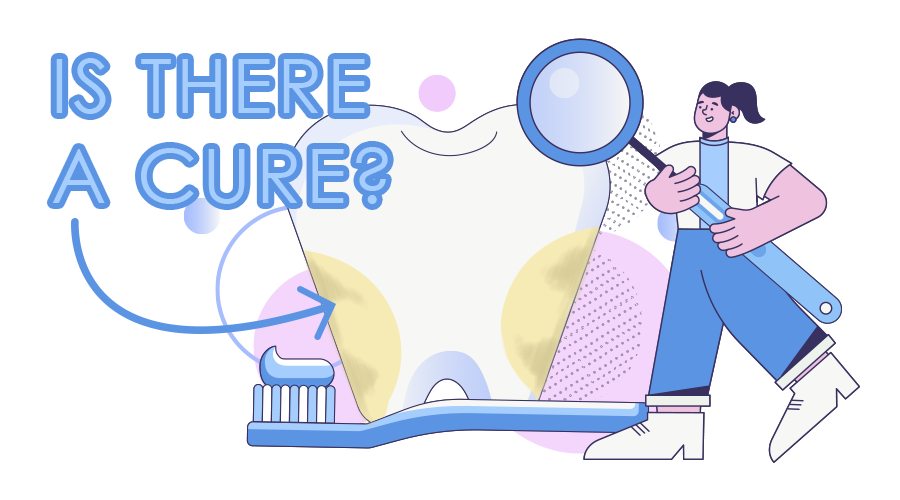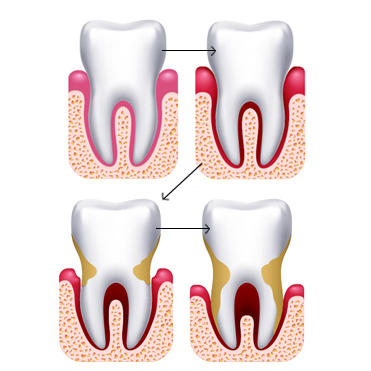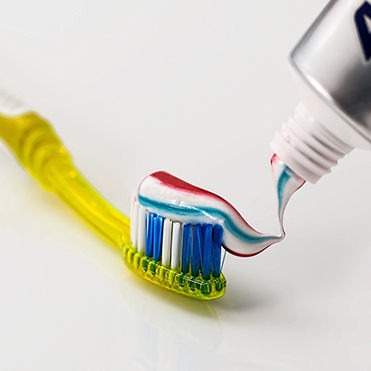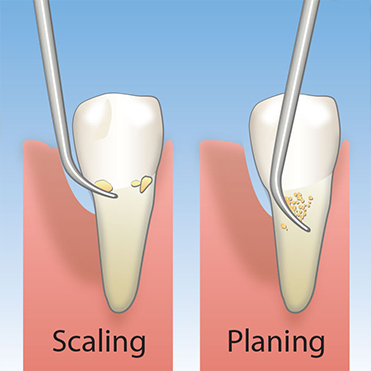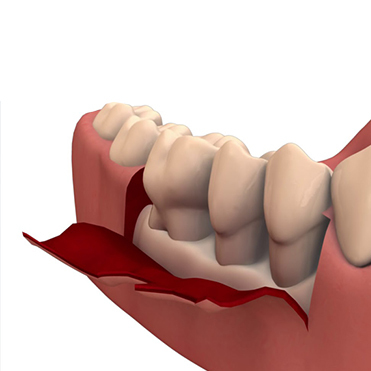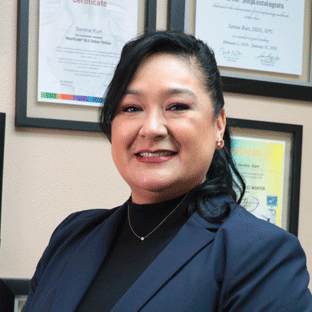If your gums look a little too red from normal, it might be time for you to pay a visit to a periodontist San Diego.
Gum disease, also known as periodontitis, is a very common oral infection that affects the soft tissue and bone that support your teeth.
When you don’t treat this condition, the bone around your teeth can deteriorate over time.
Bacteria and other microorganisms stick to the tooth’s surface and multiply in the pockets around it.
Periodontitis is usually a result of improper brushing and flossing habits. If you don’t take care of your mouth, you leave it vulnerable to bacteria.
Usually, people tend to wait until the unpleasant symptoms worsen because periodontal disease can seem invisible.
Part of that is because it is progressive and doesn’t aggravate from one day to the next.
In this post, I’ll dive into the most relevant details you should know about this disease to catch it before it’s too late.
Where Does Periodontitis Come From?
To put it simply, gum disease comes from the bad bacteria in the mouth that infect the tissue surrounding your tooth, producing inflammation and periodontal disease.
When bacteria stay on the teeth for a long period of time without being removed by brushing, they produce a film called plaque.
The plaque will then harden into tartar, also known as calculus. It’s a cycle that only gets worse.
Tartar can spread below your gum line, making teeth way more difficult to clean.
Other causes can include:
- Smoking or chewing tobacco.
- Hormonal changes (puberty, pregnancy, menopause).
- Crooked or overlapped teeth are more prone to plaque.
- Cancer and/or cancer treatment.
- Mouth breathing.
- Consumption of alcohol.
- Diabetes.
- Certain medications.
- Insufficient saliva production.
Before jumping to conclusions, you must visit a periodontist San Diego to get a detailed assessment and know where it is coming from.
What Does Periodontal Disease Look Like?
While swollen, bleeding gums are the most obvious sign of gingivitis, there are some others you should watch out for.
If you identify gingivitis early, you can simple treatments that stop the disease from growing before it affects the bone surrounding your teeth any further.
The following are some of the reversible signs and symptoms of gingivitis:
- Redness and swelling in your gums
- Bleeding in your gums when cleaning your teeth with a toothbrush or floss.
- Tartar buildup, a yellowy substance.
- Bad breath from now and then.
- Tooth sensitivity.
What Are The Stages of Periodontitis?
Periodontal disease develops in four phases, with only one of them being reversible. Take a look:
1) Gingivitis
In the first phase, gingivitis hasn’t yet attacked the bones. Therefore is the only stage of periodontal disease that you can reverse.
With the early stage of periodontal disease, there are very few indicators, which most of them are completely painless.
This is why the disease is so difficult to detect and why it is known as a silent killer.
Watch out for the following warning signs:
- occasional bad breath
- gum swelling
- gum redness
- bleeding when brushing
2) Slight periodontal disease
When you reach stage two, the infection has migrated to the bone and is killing it. By now, the disease is not reversible anymore. But you can control it.
The bacteria evolves and becomes more aggressive, resulting in bone loss. It will no longer be enough with just brushing and flossing.
3) Moderate periodontal disease
The same symptoms as stage two appear in stage three, but the spaces between your gums and teeth become larger, allowing more bacteria to cause harm to your bone.
At this point, you will need scaling and root planning treatments. These deep-cleaning procedures will remove bacteria deposits that have become embedded in your gums.
If you choose to ignore these stages, periodontal disease will manifest with:
- bone and tooth loss
- gum sensitivity
- increased bleeding
- tooth shifting
4) Advanced periodontal disease
When the periodontal disease advances to its final stage, the infection deepens even more.
You now have a higher percent chance of losing bone mass and bone deterioration.
You will definitely need periodontal surgery at this point.
Watch out for the following warning signs:
- red, swollen gums that ooze pus
- tooth sensitivity to cold
- further loosening of teeth
- painful chewing
- severe bad breath
How To Treat Periodontitis?
To get the best treatment for your specific case and effectively treat this oral disease, you’ll have to consult a periodontist.
So, what is a periodontist? is a dentist who specializes in problems with the gums and bones in your mouth.
A periodontist in San Diego will help you prevent, diagnose, and treat gum disease, helping you avoid the need to get more extensive and invasive procedures.
According to the stage of periodontitis you are in, your periodontist can recommend a range of solutions, such as:
Good oral hygiene and dental visits
Brushing your teeth for two minutes in the morning and before sleep will significantly prevent gum disease. You should also floss at least once a day.
Maintaining good dental hygiene will limit the growth of harmful bacteria by creating an environment in your mouth where they can’t develop quickly.
Scaling and root planning
Scaling is a dental treatment by which your dentist eliminates all plaque and tartar above and below the gum line.
They can clean down to the bottom of the pocket. Root planing involves smoothing out the roots of your teeth to help your gums reattach to your teeth and keep your roots protected.
In most cases, scaling and root planing treatment require more than one appointment and a local anesthetic.
Flap surgery
Suppose antibiotics or root planing and scaling are not getting the job done. Your periodontist will suggest a flap treatment.
This surgery cleans the roots of your teeth and treats bone loss caused by periodontitis.
Once you get flap surgery, you should be okay after just a couple of days.
After your gums are healed, you must maintain a daily dental hygiene routine to ensure your gums stay healthy and have a soft pink color.
Facts About Periodontitis You Should Know
According to a recent CDC report, the following facts about periodontitis prevalence in the United States:
Treat Periodontitis On Time With a Periodontist San Diego
Dr. Serena Kurt is a dentist in San Diego, located at Clairemont Mesa Blvd. She has years of experience in the field and offers comfortable, personalized dental solutions for your oral health.
She can help you determine if you have periodontitis and know at which stage you’re at. Dr. Kurt will offer you adequate treatment to ensure your smile recovers and remains healthy for a long time.
If you identify some of the symptoms of periodontitis in yourself, book an appointment at Serena Family and Cosmetic Dentistry and save your smile on time.

